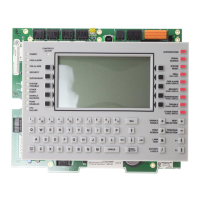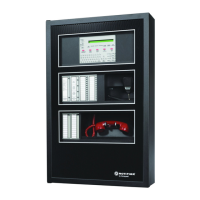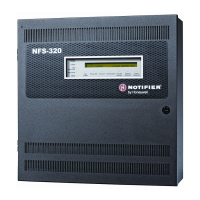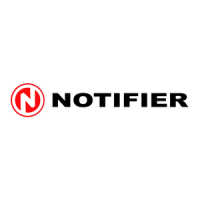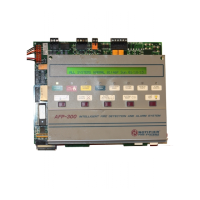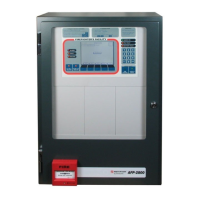46 NFS2-3030 Operations Manual — P/N 52546:N1 06/20//2014
Operation of the Control Panel Mass Notification Trouble Event
The panel will send a system normal message to the History buffer, installed printer and annuncia-
tors.
2.10.3 How to Interpret Type Codes
The Type Code that displays in the MN Supervisory message indicates the function of the point that
initiates the MN Supervisory. For example, a monitor module with a ESC/MN SUPT Type Code
means that the module monitors the state of a mass notification device. If the Type ID code is unfa-
miliar, refer to Appendix A, “Software Type ID Codes”, on page 78. This appendix is an alphabeti-
cal list of Type ID codes and an explanation of each.
2.11 Mass Notification Trouble Event
2.11.1 How the Control Panel Indicates a Mass Notification
Trouble
A mass notification trouble point activates when a device programmed as MN Trouble activates due to an
electrical short or open. The panel will react differently depending on whether or not there are higher prior-
ity unacknowledged events.
When no higher priority unacknowledged events are exist, the control panel:
• Produces a pulsed audible tone (if the piezo is enabled)
• Flashes the
SYSTEM TROUBLE LED on the fire panel and any annunciator points programmed
for general trouble
• Displays a Type Code that indicates the type of device with a trouble
• Displays TROUBLE in the upper left corner of the panel display the type of trouble and
information specific to the device.
• Sends a Trouble message to the history buffer, installed printer and annunciators
• Activates special zone ZF22
• Activates the Trouble relay (TB3) and any devices programmed as General Trouble and
General Pending
• Does not cause any devices programmed as “Resound on Trouble” to resound
• Sends a Trouble message to the proprietary receiver via the network, if applicable
When an unacknowledged event with a higher priority exists, the control panel retains the
indications of the higher priority event (the message, lit LED, audible tone, etc.) while flashing the
SYSTEM TROUBLE LED, and sending a Trouble message to the history buffer, installed printer and
annunciators.
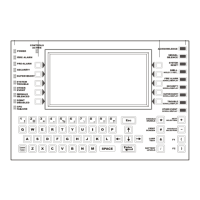
